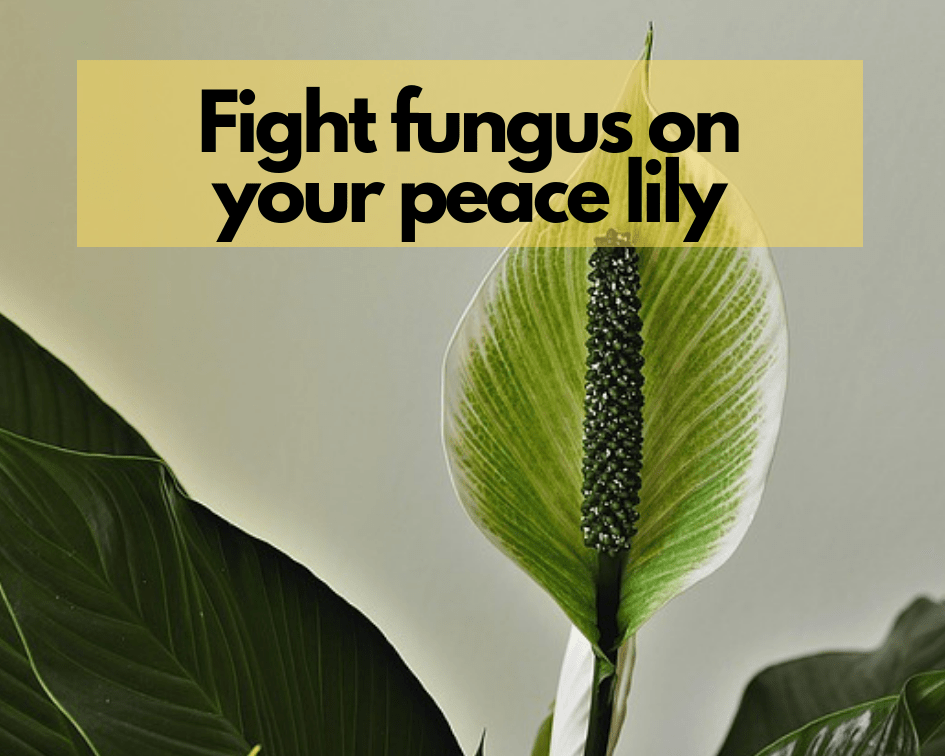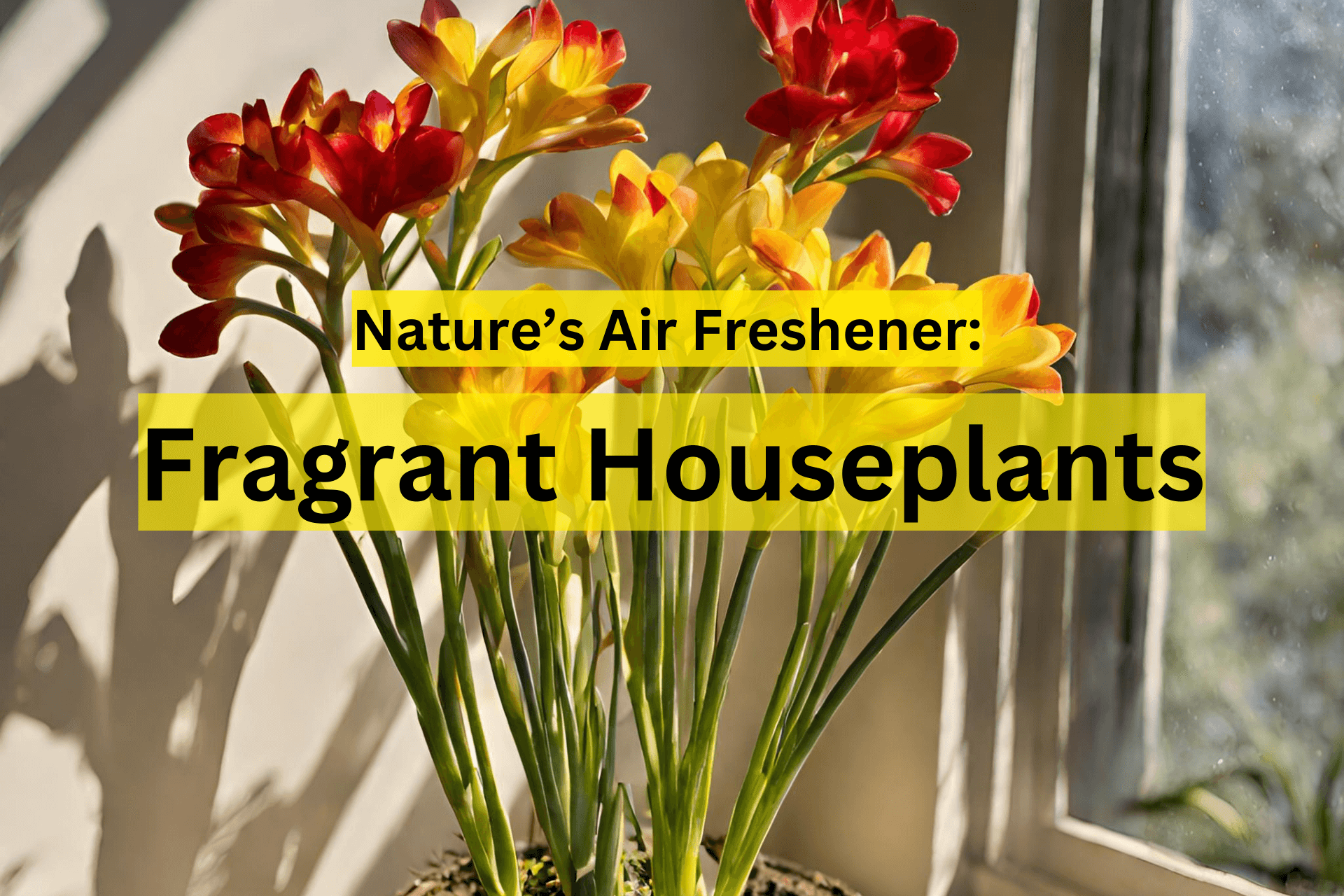This post may contain affiliate links. As an Amazon Associate we earn from qualifying purchases.
Welcome to the world of houseplants and a list of the best houseplants for beginners!
So, you caught the gardening bug, huh? We understand, completely. If you’ve decided you’d rather tend to an indoor garden than an outdoor one, and you’re a beginner, we have a treat for you.
Read on to find out which plants are the easiest to start with. Build your confidence, ya know??
Coleus: One of the best houseplants for beginners
Indoors or out, coleus (Coleus spp.) is one of the most satisfying plants to grow for the beginner. With very little care, you’ll be provided with glamourous, über- colorful foliage.
In fact, you will find yourself more challenged by choosing which coleus to plant from the nearly 300 species in the genus.
The most commonly grown species is Coleus scutellarioides from which many cultivars have been produced. Each is unique either in leaf color, variation in color and leaf shape.
Let’s dive into the care of coleus by answering some of the most frequently asked questions.
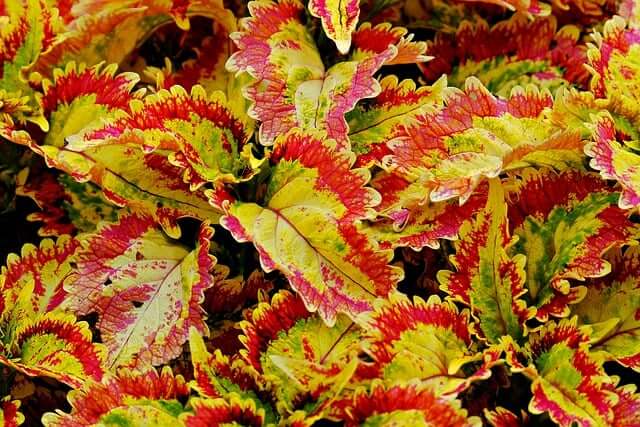 What are the common problems with coleus plants?
What are the common problems with coleus plants?
Water.
Really.
The most common problems you’ll encounter when growing coleus have to do with moisture.
These include:
- Root rot (too much moisture for too long at the roots, aka “overwatering”)
- Downy mildew (caused by Oomycete organisms which are like fungi)
- Brown tips on leaves (caused by not enough humidity or fluctuating temperatures)
- Wilting (again, the coleus needs water, fast)
Use caution when you water. Don’t splash soil onto the plant and don’t water the leaves, only the soil.
What are the most popular cultivars of coleus?
According to Wikipedia.com’s editors, many coleus cultivars are recipients of the Royal Horticultural Society’s Award of Garden Merit. You can find the entire list at RHS.org.uk.
The cultivar Coleus scutellarioides ‘Pink Chaos,’ below, is on that list and available online at NatureHills.com.

If you have your eye on a particular variety of coleus, don’t fall for the online seed sellers. Coleus does NOT come true from seed. Many new growers find that out the hard way when their coleus finally germinates and it’s a basic green or something else that is nothing like the one they had their hearts set on.
Many online gardening sites sell coleus cuttings, even Etsy.
The plant is, by the way, very easy to propagate by cuttings (in water or soil). See? We told you this is the perfect houseplant for beginners!
Does coleus like sun or shade?
For outdoor growers, the answer to this one depends on where you live. If your garden is in the desert or other areas with scorching-hot sun, you’ll want to offer morning sun and afternoon shade.
Otherwise, coleus thrives in areas with morning sun and shade or dappled shade in the afternoon. The ideal spot indoors is near an east-facing window.
Too much hot sun can burn the foliage, so don’t let the foliage touch the window’s glass.
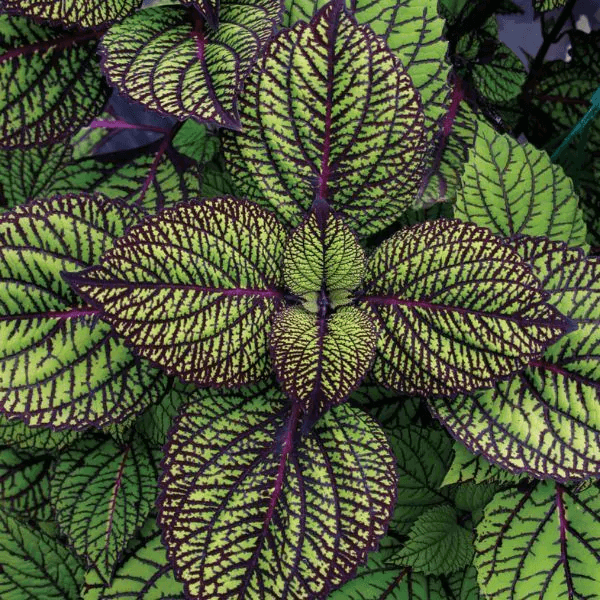
Does coleus do better in pots or the ground?
Many coleus plants do just as well in pots as in the ground. And, since this discussion is about houseplants, you’ll be glad to know that most of the cultivars commonly on offer do excellent in pots, indoors.
Should you water coleus every day?
This depends on the soil in which the coleus is growing. If it’s loose and well-drained it will dry faster than a more compacted soil.
Your best friend is your index finger. Stick it about two inches into the soil. If it’s dry down there, it’s time to water.
We like to get familiar with the heaviness of the pot right after we water and again when it needs water. That way, we just lift the pot and are able to know, by its weight, if it needs water.
Please don’t mist the coleus, raise the humidity around it or otherwise get water on the foliage. It is susceptible to a disease known as Botrytis blight and being mindful of moisture in and around the plant will help you avoid it.
Will coleus come back every year?
As a houseplant, coleus should come back every year, if it’s cared for properly. Remember that the plant cannot tolerate cold, so don’t place it in an area of the home where it may get cold drafts.
It may droop a bit as it settles down for winter. It may even lose some leaves. Don’t freak out.
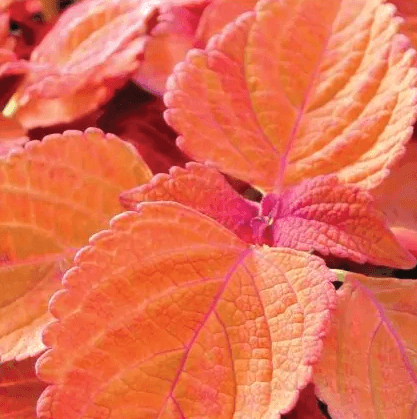
What fertilizer does coleus need?
The three primary nutrients that all plants need are represented by the letters NPK on a fertilizer’s label. They stand for nitrogen, phosphate (also known as phosphorous) and potash (also known as potassium), in that order
For amazing coleus foliage, keep the nitrogen higher than the phosphate. And, since coleus is typically not grown for its flowers, keep the nitrogen ratio larger than the potash number as well.
We recommend any fertilizer with a 3:1:2 ratio, such as 3-1-2 or 9-3-6 or 12-4-8. While the plant is young, dilute the recommended strength to one-fourth, increasing to one-half as it grows larger until you are fertilizing at full label-recommended strength when they mature.
Avoid fertilizer over the winter as coleus will go semi-dormant. Resume fertilizing again in Spring when you see new growth emerge.
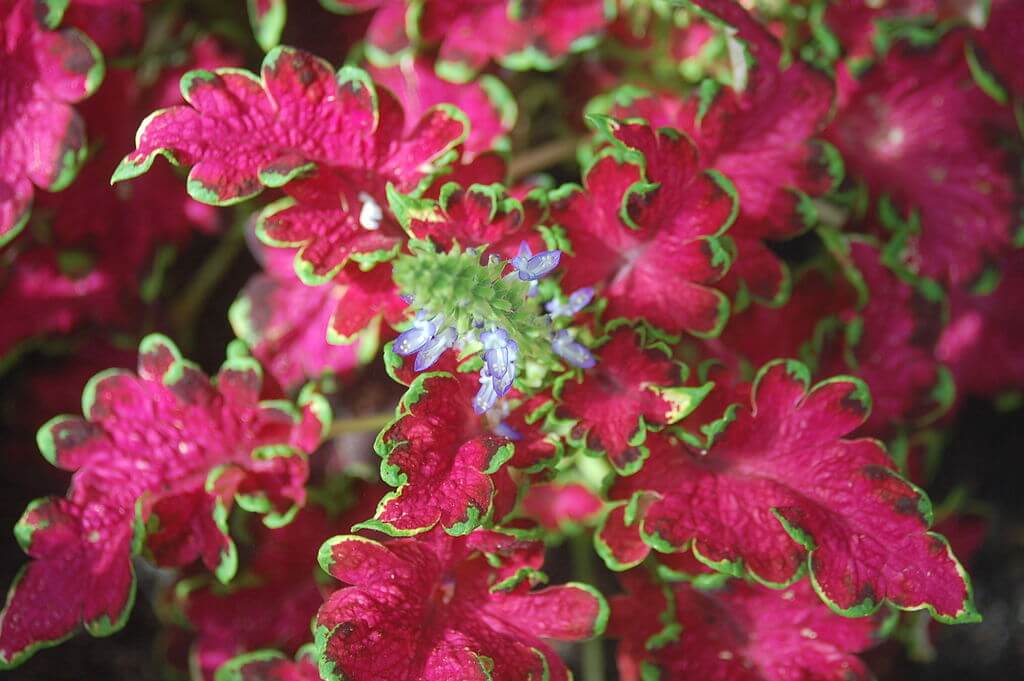 Should I remove coleus flowers?
Should I remove coleus flowers?
Absolutely. We remove them as soon as they are large enough to pinch off. Plants flower in their efforts to reproduce.
They put a lot of energy into the process, taking it from other stuff, like producing new, gorgeously colored leaves. Coleus typically start to decline after flowering.
Pinch them off. In fact, while you’re at it, pinch the growing tips of the branches on the plant to induce new branching and a bushier coleus.
Is coleus child/pet safe?
Yes, it’s safe for children but the leaves contain an essential oil that is toxic to dogs and cats. One source recommends that if you grow coleus to keep it up high enough that your pet can’t even brush up against it.
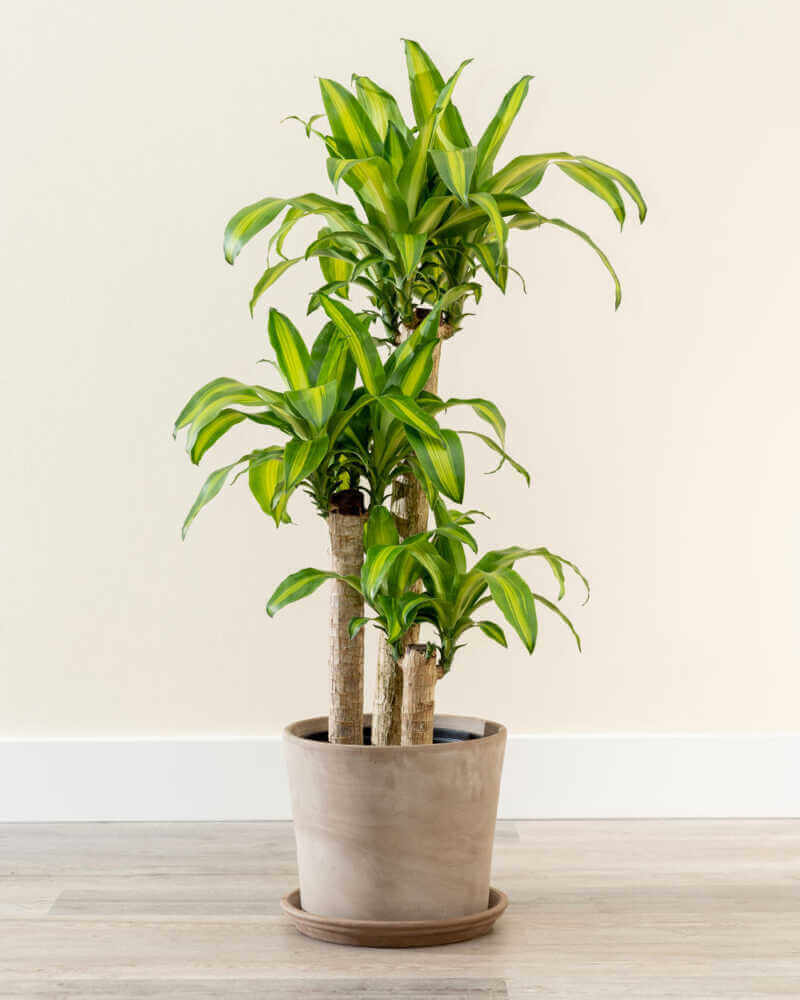
Corn Plant
We absolutely adore this plant. A true “set-it-and-forget-it” plant, it is ideal for the new houseplant grower.
The corn plant’s real name is Dracaena fragrans ‘Massangeana,’ not to be confused by it’s mama’s name, just plain ol’ D. fragrans. She has solid green leaves and the Massangeana has a yellow stripe running down the length of the foliage.
The corn plant is ideal for busy indoor gardeners as well as newbies. It tolerates a fair amount of neglect, various lighting situations and even eschews wet soil.
In fact, if you ever want to kill your corn plant, give it lots of water.
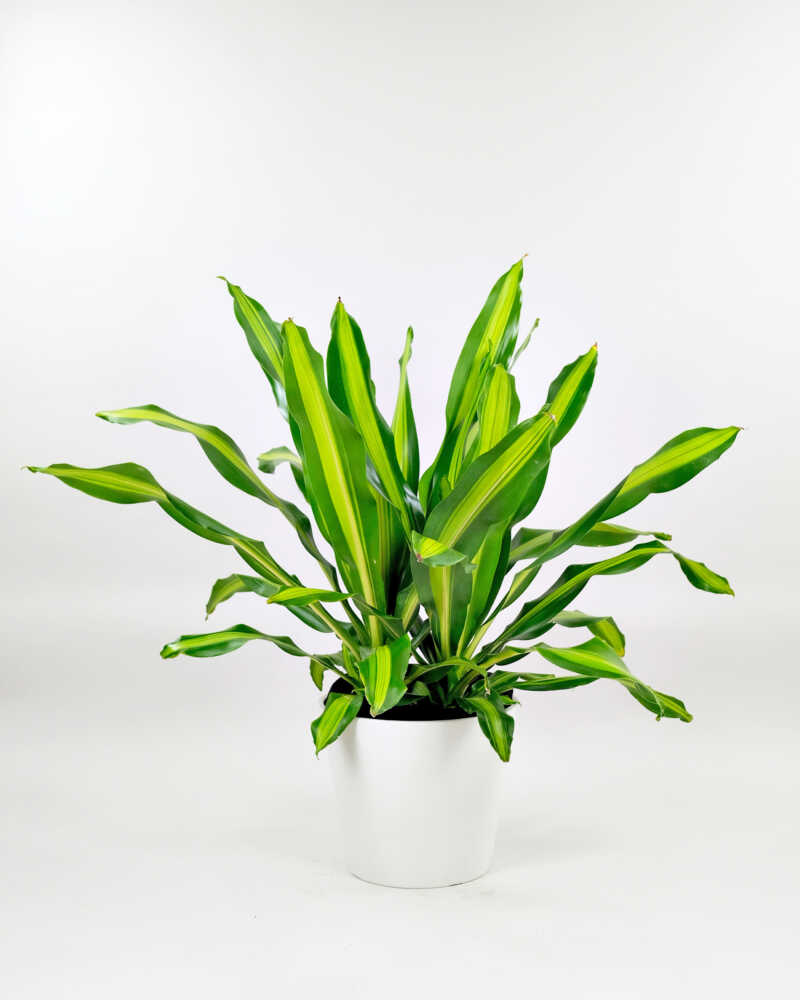
Corn plant care
Speaking of watering, there is one teensy request from the plant: when you do water, please do so with distilled water. If not, the leaves will begin to brown at the tips and then on the edges and you’ll lose that healthy, vibrant plant vibe.
Water only when the soil is bone dry. Not just at the top, but at least halfway down the pot.
As mentioned in the coleus section, next time you water the corn plant, lift the pot to get an idea of how heavy it is. Next time you think it needs water, lift it again. It should be significantly lighter than when the soil was newly watered.
We’ve learned that the best light for our corn plant was at about 9 feet from our glass doors that lead to the patio. It also got additional light from a window located about an equal distance, kitty-corner to it. In keeping with its carefree nature, the corn plant doesn’t require a lot of fertilizer. Use the same fertilizer we recommended for the coleus plant and apply it once a month while it’s growing. Don’t fertilize at all in winter.
In keeping with its carefree nature, the corn plant doesn’t require a lot of fertilizer. Use the same fertilizer we recommended for the coleus plant and apply it once a month while it’s growing. Don’t fertilize at all in winter.
By the way, if you read up on the corn plant you may run across the description on Wikipedia. The editors there quote the NASA Clean Air Study’s findings “… that the plant aided removal of indoor pollutants such as formaldehyde, xylene, and toluene.”
That study, by the way, has been soundly debunked, for a number of reasons. I kind of feel one of the biggest reasons is that it wasn’t only NASA in on the study.
In fact, it was a joint study led by NASA (National Aeronautics and Space Administration) and the Associated Landscape Contractors of America. No agenda there, right?
At any rate, new studies have debunked the old, original study. In fact, one found that to achieve results comparable to the original study is almost impossible. To get anywhere near it, in a 1,500 square foot home, you would need 100 plants per 10.7 square feet of floor space.
Ok, so you can’t count on it to remove the nasty stuff from the air, but you can count on it to sit in a dim corner and look stunning without being demanding.
Keep the corn plant away from children and pets (cats and dogs). It contains Saponin which, if eaten, can cause vomiting, loss of appetite and depression.
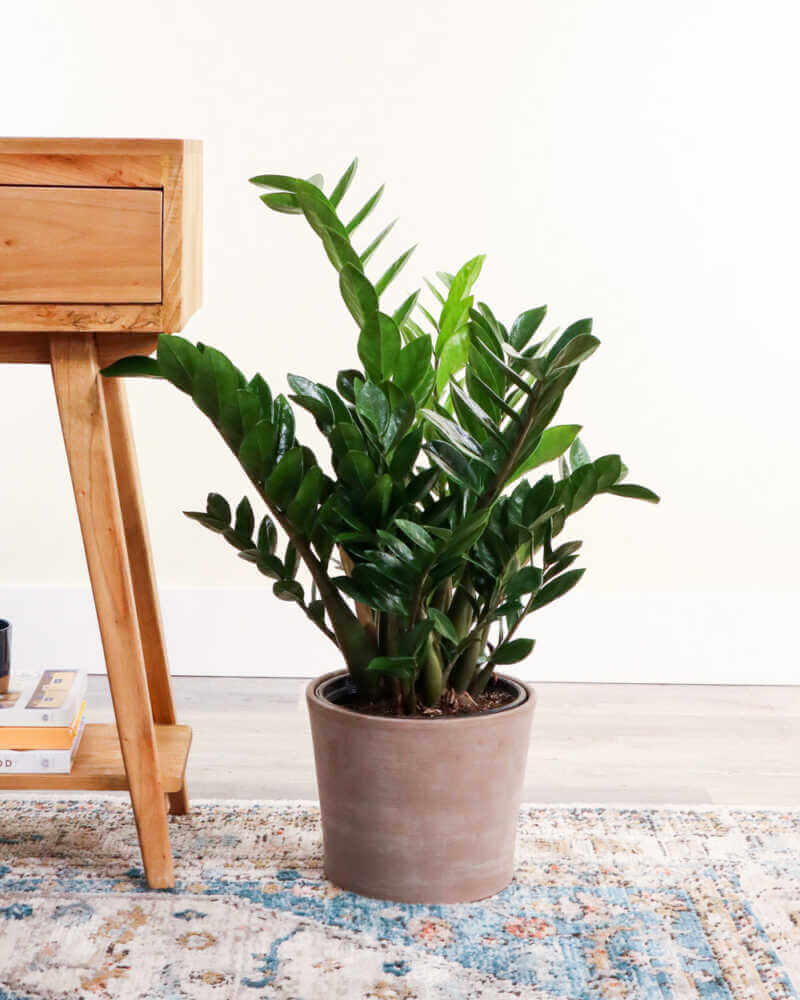
ZZ Plant
Uh-oh. Now you know the secret to the ZZ plant’s popularity: it is ridiculously easy to grow.
With a scientific name like Zamioculcas zamiifolia, is it any wonder somebody had the good sense to call it a ZZ plant and we all followed suit? The long name, however, is the most trouble this plant will give you.
ZZ plants, like the corn plant, prefer that you allow the soil to dry before offering them water. This is because of their tuberous roots that can store moisture and offer it up when needed.
These roots grow close to the surface and may even breach the soil so don’t be surprised if you see what looks like a baby potato poking out of the soil.
ZZ does like fertilizer, but not too much. Give it a dose in spring when you see new growth and then again in mid-summer. Dilute the fertilizer to one-fourth that recommended on the label. The fertilizer recommended for coleus, above, is great for ZZ plants as well.
Is ZZ plant pet/kid safe? Nope. It’s listed as “mildly toxic,” meaning that, if eaten, the pet or child will have a stomachache and may vomit. Keep the plant up high where it can’t be reached by little ones.
Download our list of pet-safe houseplants and take it with you when you shop
Mention of a fertilizer or pesticide, or use of a pesticide or fertilizer label, is for educational purposes only. Always follow the product’s label directions attached to the container you are using. Be sure that the plant you wish to treat is listed on the label of the pesticide you intend to use. And observe the number of days between pesticide application and when you can harvest your crop.



